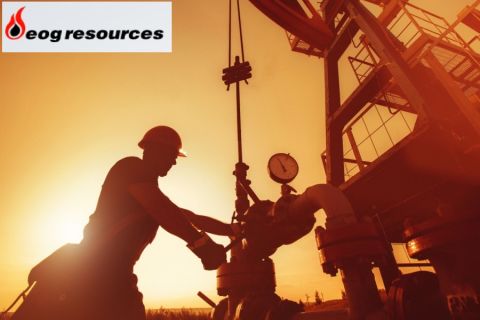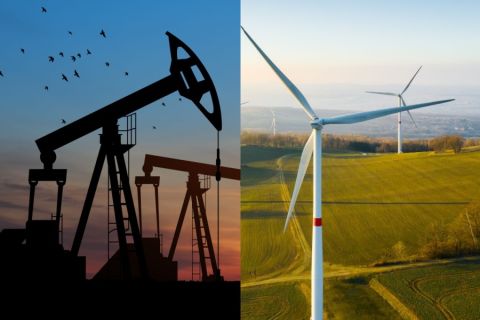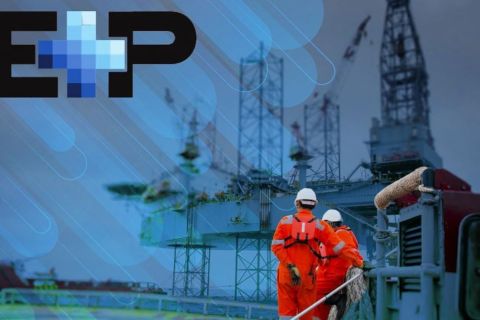The trend toward deeper waters and longer transportation distances presents a particular challenge for subsea production flowlines since the combination of high pressures and low seawater temperatures can result in hydrate formation or wax deposits inside the flowline. Such deposits can reduce and even completely block the flow of oil and gas from the template, especially during operational shutdowns and tail production periods.
Several methods are employed to prevent the formation of hydrates, with chemical injection perhaps still being the most widely applied. During the last decade, however, direct electrical heating (DEH) has emerged as an attractive alternative. DEH controls the flowline temperature to maintain it above the critical threshold for hydrate formation. By heating the flowline electrically, the need for chemical injections is reduced considerably. This “cleaner” approach also leads to significantly reduced operating costs.
DEH
The DEH system takes advantage of the fact that an electric alternating current (AC) in a metallic conductor generates heat. The flowline to be heated serves as an active conductor in the electric circuit formed by the riser cable, the feeder cable, the piggyback cable and the flowline.

FIGURE 1. The piggyback cable is strapped to the flowline, which then becomes the primary return conductor in the system. (Source: Nexans)
AC is supplied from the topside power system via the riser cable. Subsea, the riser cable is connected to the feeder cable in a subsea junction box. Using the feeder cable, one of the phases in the riser cable is connected to the flowline near end, while the other phase is jointed to a piggyback cable. The latter is strapped to the flowline along the entire length to be heated and connected to the flowline at the far end. The flowline then becomes the primary return conductor in the system and is heated due to its own electrical resistance (Figure 1).
For safety and reliability reasons, the flowline is electrically connected to the surrounding seawater (i.e. it is an “open system”) through several sacrificial anodes. These aluminum anodes are rated for both corrosion protection and sufficient grounding of the system during the expected lifetime of the flowline and the service life of the heating system (Figure 2).
During operation, current is fed to the far end of the flowline through the piggyback cable, and the current returns through the steel flowline and seawater. At each end of the flowline the current is distributed between flowline and sea. Here, additional anodes are mounted to the flowline to form a well-defined low-impedance path for the current to sea (Figure 3). This part of the flowline is known as the current transfer zone.
Nexans Norway has pioneered the development of DEH in partnership with Norwegian operators and research organizations. Nexans has carried out qualification testing for more than a decade and has designed cables and equipment to meet the specific needs of each DEH system. The world’s first DEH installation was performed in 2000 for Statoil’s Åsgard oil and gas field in the Norwegian Sea, where it serves to heat the flowlines from 6 C to 27 C (43 F to 81 F) to prevent hydrate formation.
To date Nexans has delivered more than 225 km (140 miles) of DEH cables to heat 19 flowlines.

FIGURE 2. The riser cable is connected to the feeder cable in a subsea junction box, as seen in this picture. The subsea junction box is designed to hold the cable load during jointing onboard a vessel and lay-down to seabed. (Source: Nexans)
Deeper waters
Nexans is currently manufacturing the DEH system for the subsea flowlines serving the Lianzi oilfield development located in a unitized offshore zone between the Republic of Congo and the Republic of Angola. With a water depth of up to 1,070 m (3,510 ft), this will be the world’s deepest DEH system.
In the future, the goal is to reach even greater depths. Nexans has performed feasibility studies, and in an internal development project Nexans is working on developing a DEH system for deeper waters, aiming for 3,000 m (9,843 ft).
When designing a DEH system for such large water depths, there are several new issues to consider. Increased weights and loads, material qualification data, water pressure influence and long cable catenary lengths are some of the issues that differ significantly from the traditional DEH systems typically installed at 300-m to 400-m (984-ft to 1,312-ft) water depth. One of the biggest challenges is that copper is unable to carry its own weight at deeper waters due to poor mechanical properties.
Because of the growing interest in deepwater applications in the offshore industry, Nexans has previously qualified a dynamic deepwater power cable for 3,000-m water depth.
The dynamic deepwater power cable contains three copper conductors, and an optimized combination of lay-angles is applied to achieve a desirable stress distribution in the cable cross section, thereby preventing mechanical overload of the conductors. This is achieved by transferring as much of the tensile load as possible from the copper to the armor by applying steel armor with long lay lengths (small lay angle) while the copper conductors are wound with short lay lengths (large lay angle). This means that the length of the copper is greater than the length of the armor per meter of cable. The longitudinal elongation of the armor is therefore larger than the longitudinal elongation of the copper. The friction between the layers combined with the compressing effect from the armor when tensioned ensures that the elements do not slip inside the cable. In addition, a flexible center profile allows the power phases to move toward the center due to induced contact forces from the helically wound armor wires. This will further reduce the conductor stress and also give a more uniform distribution of induced contact stresses acting on the insulation.

FIGURE 3. Power is supplied from a topside power supply as shown in this schematic of a typical DEH system. (Source: Nexans)
The same principle also can be used in riser cables, and this is one possible method for designing a dynamic riser cable for large depths. Alternative material choices and configurations also are being explored.
It is not only the riser cable that provides challenges when designing a DEH system for large water depths. If the piggyback cable is to be designed for a traditional repair scenario, it must be brought to the surface and must therefore be able to carry its own weight. Metallic elements in the piggyback cable other than the conductor reduce the efficiency of the DEH system, and this is not recommended. Therefore, alternative methods of reducing weight or increasing axial stiffness must be considered. This can be achieved by considering new conductor material choices or configurations.
Recommended Reading
EOG: Utica Oil Can ‘Compete with the Best Plays in America’
2024-05-06 - Oil per lateral foot in the Utica is as good as top Permian wells, EOG Resources told analysts May 3 as the company is taking the play to three-mile laterals and longer.
Marketed: Mississippian Play Opportunity in Grady County, Oklahoma
2024-05-06 - An undisclosed seller has retained EnergyNet for the sale of a Mississippian play opportunity in the Bennet 0607-22-27-1MXH in Grady County, Oklahoma.
Marketed: DLH Capital 14 Well Package in SCOOP/STACK
2024-05-06 - DLH Capital LLC has retained EnergyNet for the sale of a 14 well package SCOOP/STACK opportunity in Blaine, Caddo, Canadian and Grady counties, Oklahoma.
OTC: Will More Electrical Demand Bring Energy Debate Back to Reality?
2024-05-06 - Energy experts, including Scott Tinker, touted the importance of discussing the environmental and economic impacts of moving energy forward at the 2024 Offshore Technology Conference.
E&P Highlights: May 6, 2024
2024-05-06 - Here’s a roundup of the latest E&P headlines, including technology milestones and new contract awards.



